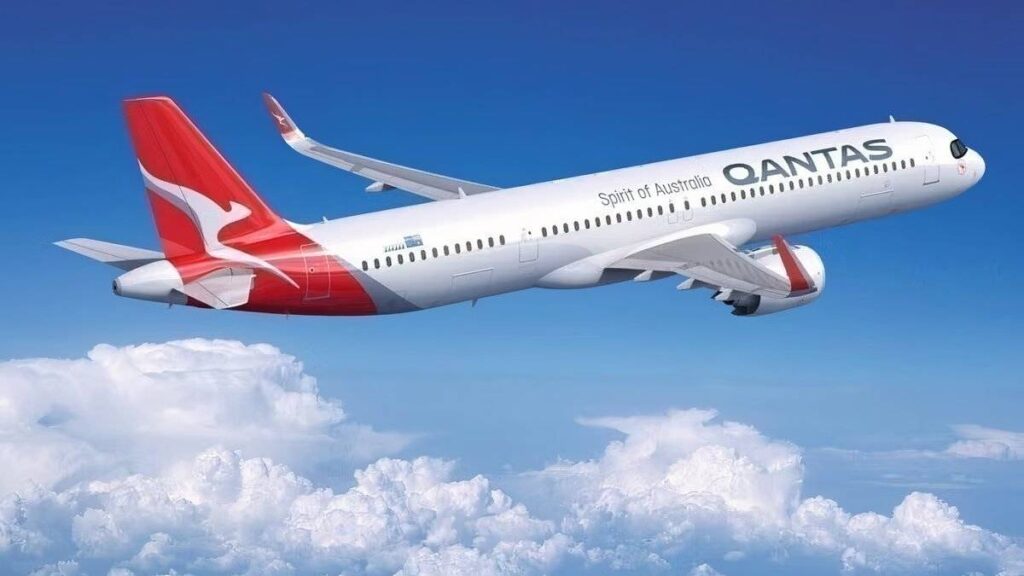
Australian flag carrier Qantas is set to debut its new Airbus A321XLR aircraft on routes between Sydney and Melbourne, as well as Sydney and Perth, by mid-September. This move marks a significant step forward for the airline, as the A321XLR’s extended range of 5,400 miles (8,700 kilometers) surpasses the Boeing 737 by over 1,860 miles (3,000 kilometers). This increased range will enable Qantas to explore new international routes to the Pacific Islands and Southeast Asia.
The first two A321XLR aircraft, configured for domestic and short-haul international flights, will commence operations on these domestic routes in September. As the first airline in Oceania to operate this type of aircraft, Qantas plans to gradually introduce the A321XLR on additional domestic and international routes.
Strategic Route Selection: Sydney to Melbourne and Perth
Introducing the A321XLR on flights between Sydney and Melbourne, as well as Sydney and Perth, is a strategic decision for Qantas as it integrates these aircraft into regular commercial service. These routes are among the airline’s most popular, with Sydney Kingsford Smith Airport (SYD) serving as the airline’s primary hub. The domestic aviation market in Australia is highly competitive, with Virgin Australia and Qantas’ subsidiary, Jetstar, providing significant competition.
Qantas operates one of the world’s busiest domestic networks, with the ‘Golden Triangle’ flights between Sydney, Brisbane, and Melbourne often requiring narrow-body aircraft. During peak travel times, these flights are upgraded to wide-body planes. Qantas CEO Vanessa Hudson commented on the strategic importance of the A321XLR:
“Not only will the A321XLRs help us serve the corporate market traveling between Perth and the east coast of Australia, they will also allow us to expand flying on existing routes into Southeast Asia and open up new possibilities like Perth-India and Adelaide-Singapore.”
Enhancing Passenger Experience with Longer Range and Comfort
Qantas has committed to a significant fleet renewal program, with 214 new aircraft on order and 32 delivered as of June 2025. This investment aims to revolutionize the airline’s fleet, with the A321XLR playing a pivotal role in replacing older Boeing 737-800 aircraft and enhancing the passenger experience.
While the domestic and short-haul A321XLRs will not feature seatback entertainment, passengers can access onboard WiFi to stream content via the Qantas app. From 2028, the long-haul A321XLRs will include lie-flat business class seats and seatback screens, ensuring a consistent premium experience on selected domestic and long-haul international flights. The A321XLR fleet details are as follows:
- Delivered: 2
- On Order: 48
- Configuration Two: 180 economy seats
- 20 business, 177 economy seats
- 16 with lie-flat business configuration
Qantas initially ordered 30 A321XLRs but recently announced plans to order an additional 20, bringing the total to 50. This expansion includes 16 aircraft with new lie-flat business class seats, marking the first time such seats will feature on Qantas narrow-body aircraft. Deliveries of these new configurations are expected from 2028.
A Cornerstone of Qantas’ Fleet Renewal Strategy
The development of the A321XLR fleet is integral to Qantas’ multi-billion-dollar fleet renewal program. This initiative will accelerate the retirement of aging Boeing 737 aircraft and allow Qantas to introduce new routes to previously unserved destinations. Potential new routes include domestic services from Perth to the East Coast of Australia and niche international routes such as Perth to India or Adelaide to Singapore.
As a founding member of the oneworld alliance, Qantas is the only commercial airline that operates on all seven continents, including seasonal charter services to Antarctica. The airline serves over 60 domestic destinations across Australia and holds approximately 60% of the Australian domestic aviation market.
Qantas remains the largest airline in Oceania, operating a diverse fleet that includes the Airbus A330, A321XLR, A380, and Boeing 737 and 787 aircraft. The airline also aims to pioneer non-stop services between Sydney and London or New York under its Project Sunrise initiative.
With the introduction of the A321XLR, Qantas is poised to enhance its operational capabilities and passenger experience, setting the stage for future growth and innovation in the aviation industry.






